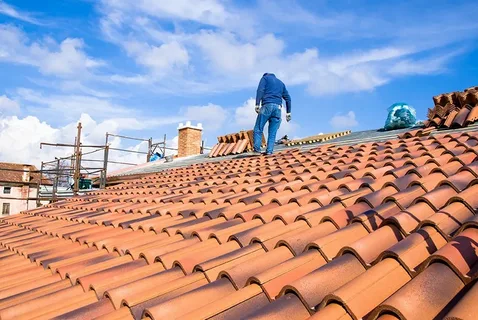You should never ignore a leaky roof. If you do, you risk having the issue turn into something more serious and expensive down the road. In fact, even if you think that your roof isn’t leaking now, there’s a good chance it will eventually begin doing so as time goes on with the right Roof Restoration central coast—especially in older homes like yours.
Check out leaks.
You can check for leaks by looking for wet spots on the roof. If you don’t see any evidence of water damage, then there is probably no leak. If you do find wet spots, look around those areas more closely and try to locate the source of the leak.
If you can’t identify where it’s coming from or if they are too far away from your home, call in a professional to check them out–they may be able to fix them without replacing any part of your roof!
Evaluate damage.
You should examine the damage and determine if the problem is a minor fix or something more serious.
- Water damage: Look for signs of water stains or mold growth on the ceiling, walls, and flooring. If you see any of these indicators, it could mean that your roof is leaking and needs to be repaired right away.
- Structural damage: If there are cracks in wood beams or columns supporting your home’s structure, you might want to call in a contractor right away because this could lead to further structural problems later on down the road if left untreated now!
- Dry rot: This happens when wood becomes rotted due to dampness from rainwater seeping into porous materials like plywood or OSB boards used as roof sheathing (the layer directly under shingles).

Assess the problem.
Once you’ve identified a roof leak, it’s time to assess the problem. First, determine whether or not you can fix it yourself. If there are only one or two holes in the roof and they’re relatively small, then it might be worth giving DIY repairs a shot. If you find that there are multiple leaks throughout your home and/or if they’re large enough to require professional assistance (for example, if water is dripping through multiple layers of shingles), then call in an expert immediately.
The next step is assessing how severe the damage is–not just visually but also structurally speaking. If there are cracks in any part of the roofing material itself–whether it’s slate tiles or asphalt shingles–you’ll want to replace those parts before they become too deteriorated and need replacement anyway!
Determine if you can fix it yourself or need to hire a professional.
Before you decide to hire a professional Roof Restoration central coast, it’s important to determine if the problem is minor or major. If the issue is minor (for example, a leaky roof that can be easily repaired), then it may be worth your while to do some of the work yourself and save money by hiring someone else for the rest of it.
On the other hand, if there are major structural issues with your home (such as cracks in walls), then calling in an expert is probably best because they will have access to specialized tools and materials that will ensure proper repairs are made quickly and effectively.
Conclusion
In conclusion, there are many things you can do to repair your roof yourself. However, if you feel that the job is too big for you or if it’s something that needs professional attention, don’t hesitate to call a contractor. The most important thing is safety: so if something looks dangerous or feels like it could collapse on you at any moment then don’t try doing it yourself!

